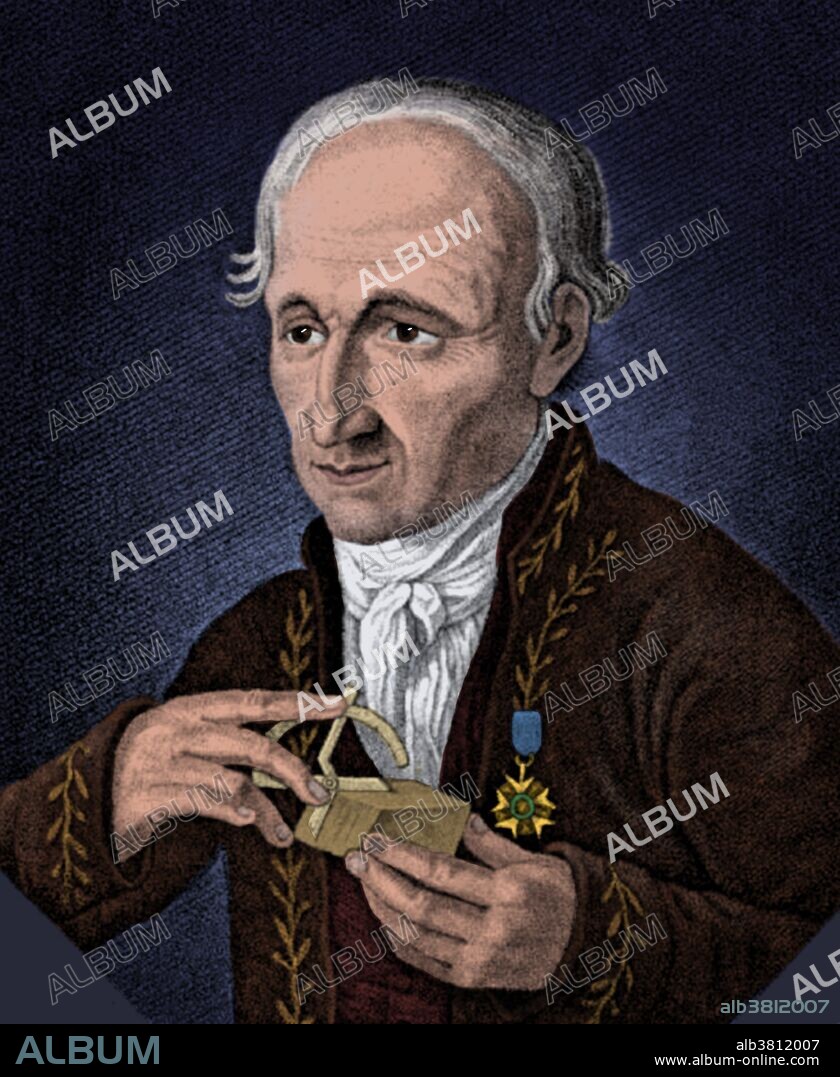alb3812007
Rene Just Hauy, French Mineralogist

|
Zu einem anderen Lightbox hinzufügen |
|
Zu einem anderen Lightbox hinzufügen |



Haben Sie bereits ein Konto? Anmelden
Sie haben kein Konto? Registrieren
Dieses Bild kaufen

Titel:
Rene Just Hauy, French Mineralogist
Untertitel:
Siehe automatische Übersetzung
Rene Just Hauy (February 28, 1743 - June 3, 1822) was a French mineralogist and ordained Roman Catholic Priest. His interest in crystallography resulted from the accidental breaking of a piece of calcite. Upon examination he discovered that they cleaved along straight planes that met at constant angles. He broke more pieces of calcite and found that, regardless of the original shape, the broken fragments were consistently rhombohedral which led to his theory of crystal structure. Hauy's law of whole numbers (law of rational intercepts), one of the primary laws of crystallography and also one of the first quantitative laws of the atomic-molecular structure of solids. He is also known for the observations he made in pyroelectricity. When the Revolution broke out, he was thrown into prison. In 1802, under Napoleon, he became professor of mineralogy at the National Museum of Natural History. After 1814 he was deprived of his appointments by the Restoration government. His final days were spent in poverty and he died in 1822 at the age of 79. His name is one of the 72 names inscribed on the Eiffel Tower. This image has been colorized.
Bildnachweis:
Album / Science Source
Freigaben (Releases):
Model: Nein - Eigentum: Nein
Rechtefragen?
Rechtefragen?
Bildgröße:
3450 x 4208 px | 41.5 MB
Druckgröße:
29.2 x 35.6 cm | 11.5 x 14.0 in (300 dpi)
Schlüsselwörter:
18. JAHRHUNDERT • 18. JH. • BERÜHMT • BERÜHMTE PERSÖNLICHKEIT • EUROPAEER (F M) • EUROPAEER • EUROPÄER (F M) • EUROPÄER • EUROPÄISCH • GEISTLICHER: PRIESTER • ILLUSTRATION • ILLUSTRATIONS • KATHOLIK • KATHOLISCH • MANN • MINERALOGE • NOTABEL • PERSON • PERSöNLICHKEITEN • PERSÖNLICHKEITEN • PFARRER • PORTRAIT • PRIESTER • PROMINENZ
 Pinterest
Pinterest Twitter
Twitter Facebook
Facebook Link kopieren
Link kopieren Email
Email
